“Energy can neither be created nor destroyed” – we’re quite sure you’ve come across this line in your school physics classes.
To understand the working principle of a heat recovery system, you’ll need to go back to the basics. This is why we’re giving you a refreshers course before we dig deeper into the topic.
Energy keeps transferring from one form to another, and often during the process, some amount of it is lost. Heat recovery units make sure that the thermal energy extracted from the room doesn’t get wasted during the process. Instead, they utilize it to recycle and then circulate fresh and filtered air throughout the room.
How? Here’s where you’ll find out.
Through this guide, we’ll be explaining how heat recovery systems work. This not only includes the basic working mechanism, but it also provides valuable information related to its types, benefits, installation, maintenance, and more.
Before that, we’ll be addressing an important question – what is a heat recovery system? So, without wasting any more time, let’s get going!
How Heat Recovery Systems Work | All You Need to Know
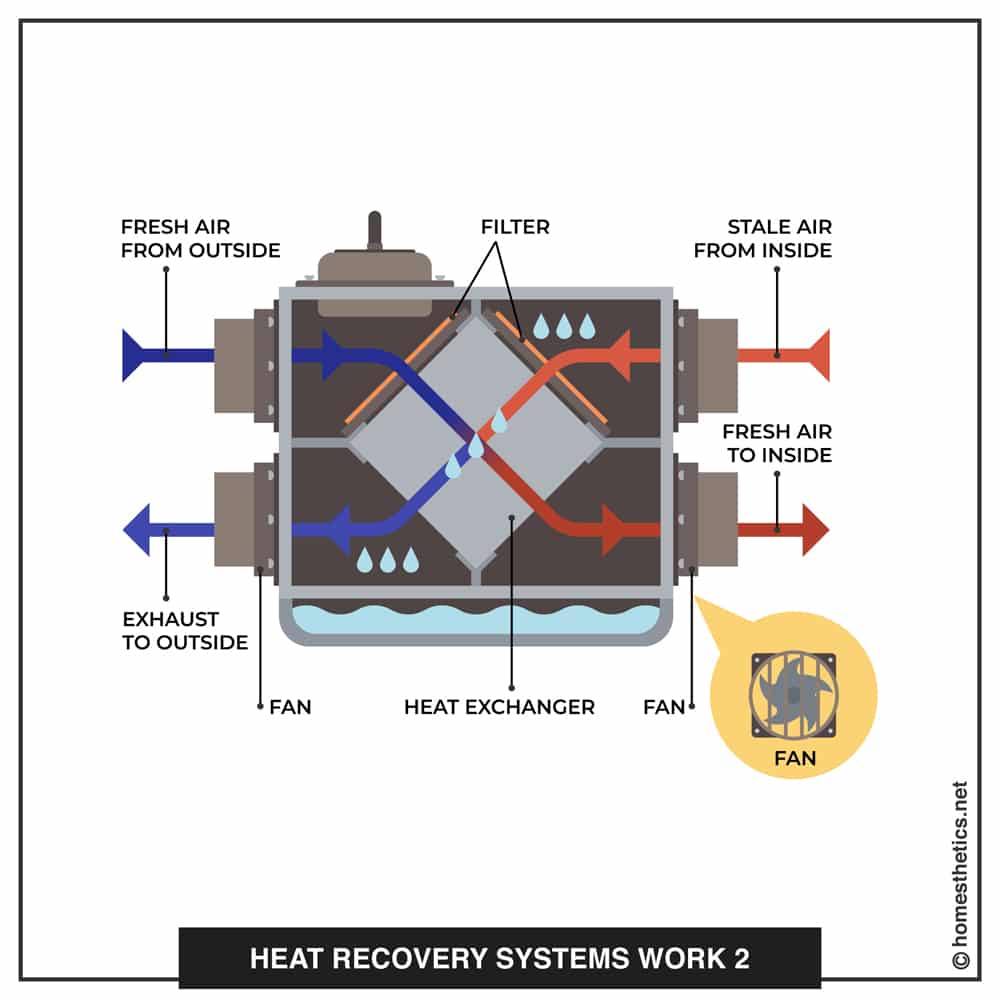
What Is A Heat Recovery System?
Before diving into the working principle of a heat recovery system, we find it imperative to provide an informative summary to explain more about it in detail. On that note, a heat recovery ventilation system (HRV), aka, mechanical ventilation heat recovery system (MHVR), is basically an energy recovery ventilation system.
It works between two sources at different temperatures to reduce heating and cooling demands of buildings, thereby saving energy costs. Designed to supply conditioned air to any desired space, it keeps the house fully ventilated to ensure optimal comfort by recovering lost heat from the extracted air.
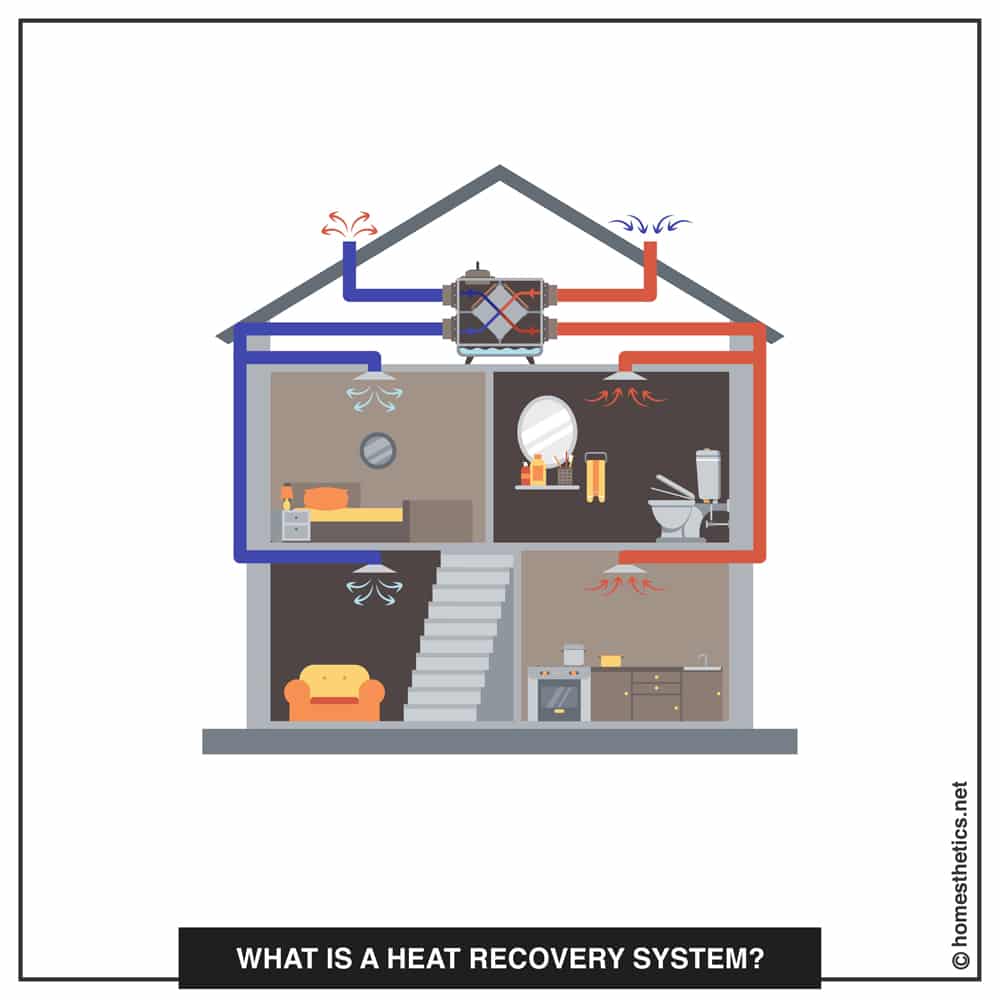
In other words, it makes sure that the heat energy produced on a daily basis in offices, homes, and industries isn’t wasted. Be it the heat obtained from an oven in a restaurant or the ongoing emissions of a factory; it conserves energy by recycling it and then circulating it as fresh and clean air.
How Does A Heat Recovery System Work?
Now that we’ve explained the primary function of this ventilation system, it’s time we answered the most crucial question, which forms the basis of our guide – “how do heat recovery systems work?”
When located in the attic or roof of your building, the energy ventilation unit works by extracting moist air from the wet rooms of your home. And instead of simply replacing the stale air with fresh and clean air, it draws heat, and then passes it through the air that’s filtered in from outside.
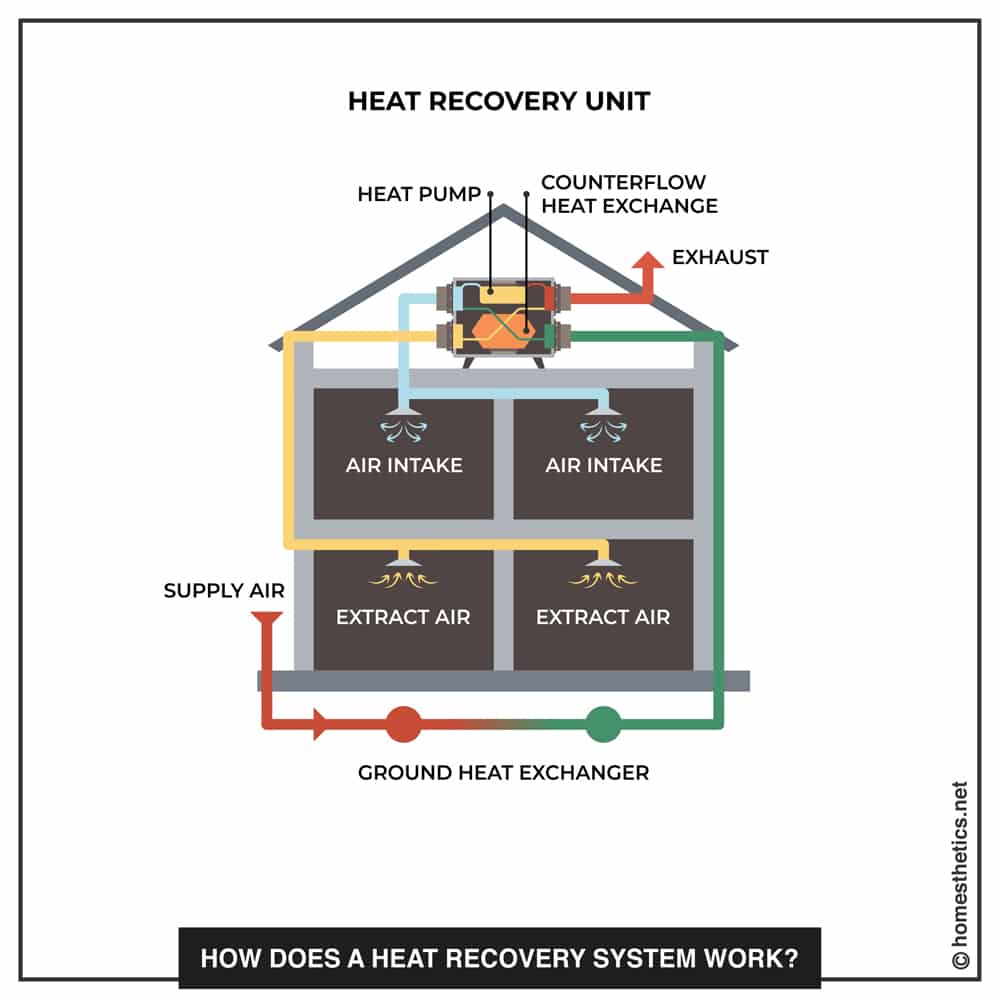
There’s no need to worry about cross-contamination of different air flows since both the extracted and supplied air don’t flow within the same pipes. Usually, the unit is connected to the air valves of the room via a network of ducting throughout the building.
These valves filter the air supplied in and out of each room, finally progressing to the heat exchanger, which is commonly known as the brain of the heat recovery system. It moves the stale air through the innumerable number of small pipes while drawing in cold air from outside via the other ducts.
Working independently of any normal heating system, the unit allows the air to flow past each other without physically mixing. However, it transfers the heat extracted from the stale air to the cold air before feeding it back down into the pipes and the rooms, while the former is expelled back into the atmosphere.
Over the years, the technology involved in heat recovery units has improved significantly. You’ll be pleased to know that we now have systems that claim to extract up to 90% of heat from stale air before returning it to the atmosphere to continue the circulation process.
What we’ve explained here is just the basic working mechanism of the system in general. Heat recovery can be made possible through thermal wheels, heat pumps, plate heat technology, or even more complex industrial processes.
To know more details, you need to go through the different types of heat recovery units, which brings us to our next section…
Types Of Heat Recovery Systems
-
Rotary Thermal Wheels
Rotary thermal wheels help in mechanical heat recovery. A porous rotating metallic wheel passes through each fluid alternately at different temperatures to transfer thermal energy from one stream to another.
Working as a storage mass, the system temporarily stores the extracted heat from the air within its wheel matrix until it’s transferred to a cooler air stream. That said, there are two types of rotary thermal wheels to consider – heat wheels and enthalpy (desiccant) wheels. Both these wheel-types are geometrically similar, but they differ in operation.
-
Heat Pipes
Heat pipes utilize a multi-phase process to transfer heat from one air stream to the other. In other words, using an evaporator and condenser, heat is transferred within a sealed pipe containing a fluid that undergoes phase changes constantly. In the evaporation section, the fluid changes to gas while absorbing the thermal energy from the warm airstream.
On the other hand, it changes back into the fluid in the condenser section, allowing the thermal energy to dissipate into the cooler stream to raise its temperature. And depending on the arrangement of the heat pipe, the fluid or gas is usually transported from one side of the pipe to the other through pressure or gravity.
-
Fixed Plate Heat Exchangers
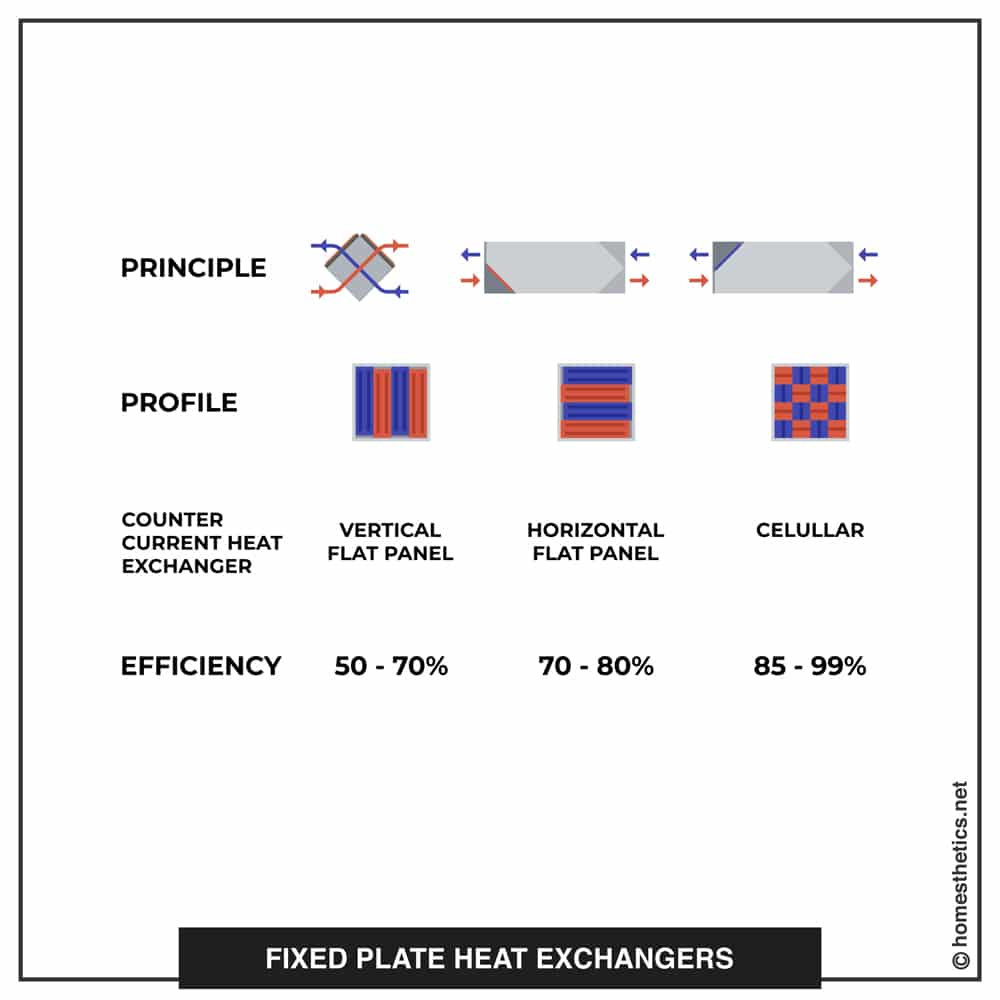
After being developed for 40 years, fixed plate heat exchangers have emerged as the most commonly used heat exchangers in the market today. In this system, thin metal plates are stacked with small spacings between them, through which two different air streams pass adjacent to each other. Heat is then transferred from one air stream to the other through these plates.
You can expect 90% heat efficiency while using this device. Also, note that the high level of efficiency of the system is attributed to heat transfer coefficients of the materials used, temperature range, and operational pressure.
-
Run-Around Systems
Next up, we’d like to introduce you to a hybrid heat recovery system that’s capable of extracting heat from one air stream and delivering it to a significant distance away. Run-around systems form a single device by incorporating the characteristics of every other heat recovery technology.
It utilizes two fixed plate heat exchangers located in two separate air streams, linked by a close loop, containing a fluid. This, in turn, is continually pumped between the heat exchangers while being constantly heated and cooled to provide heat recovery.
For this, it requires pumps to move between both the heat exchangers, which is a more energy-efficient alternative of circulating air.
-
Phase Change Materials
Commonly referred to as PCMs, phase change materials help in storing latent heat within any building structure at comparatively higher storage capacity. In fact, the thermal heat storage capacity of PCMs is twelve times higher than standard building materials over the same temperature range.
These systems can be directly incorporated into the building structure without having to bother about pressure loss or cross-contamination. What’s more, PCMs don’t affect the airflow like other heat exchanger technologies. However, they’re a bit expensive compared to some of the other heat recovery units.
Where Do Heat Recovery Systems Work Best?
For the heat recovery system to work at its best, the house or office complex needs to be fully insulated. Not only that, but you also have to make sure that all the areas which can potentially cause the warm air to escape are sealed. These systems aren’t suitable for old houses as they tend to lose more heat compared to newer buildings.
That said, heat recovery units also work efficiently on an industrial scale. They help in collecting escaping heat from large boilers where the heat is usually eliminated through a flue. These days, most new condensing boilers come with a technology that’s already fitted for the purpose, unlike the older models.
Can Heat Recovery Systems Work Smartly?
With the progression of technology, almost every appliance or gadget features intelligent controls to make your life much simpler. The same goes for heat recovery ventilation units! These systems can behave smartly to reduce the amount of heat extracted during the summer.
Consequently, they help in maintaining a comfortable environment in your office or home. That’s not all; these units can be used to extract more heat from busy areas of your home, such as wet and congested rooms and kitchens, where the temperature is likely to be higher.
Benefits Of Heat Recovery Systems
Recycling stale air by drawing out the useful thermal energy from it before elimination helps in keeping you warm in winter and cooler in summer. This can lead to several health benefits, which you might not even be aware of.
Think about it in this way – an airtight building with no proper ventilation will obviously result in breathing poor quality air. Did you think about its effects on health? For starters, it can lead to severe respiratory problems like asthma.
It doesn’t just end there. Poor air quality can also lead to other issues, such as mold, dust mites, unpleasant odors, condensation, and toxic gas build-up, to name a few.
Installing a heat recovery unit helps overcome these concerns as it helps in replacing moist, stale air from the room with clean, fresh, warm, and filtered air. It manages to keep your rooms fully ventilated at all times, making them habitable.
What’s more, these units keep your home warm during the cold winter months, while saving on electricity bills. In fact, with technology taking the greener route, heat recovery systems have proven their energy-efficiency time and again.
They have always managed to improve the quality of living, thanks to their advanced technologies, which have been showing visible signs of improvement since day one. Today, we have smart heat recovery units that reduce the amount of heat extracted during the summers. As such, they maintain optimum comfort levels in both offices and homes without the need for opening windows and doors.
Installation & Maintenance
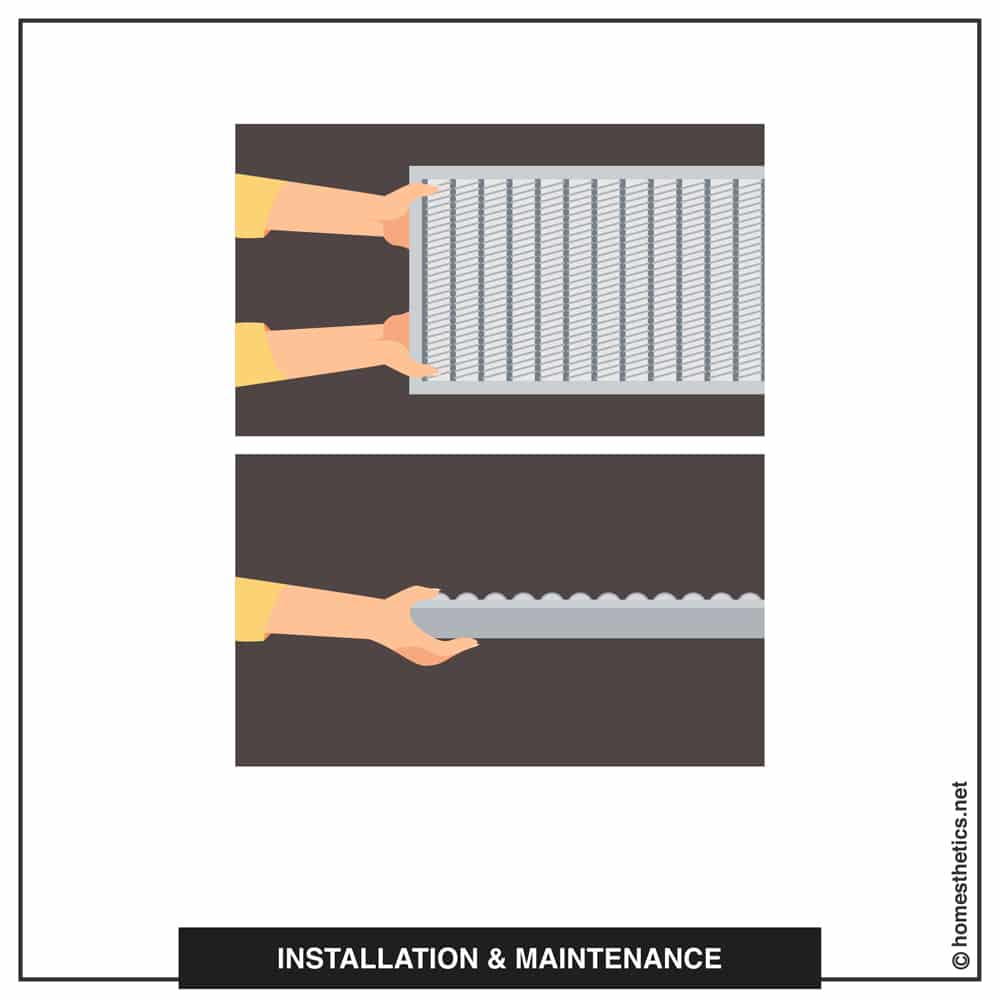
Installing a heat recovery unit can be a daunting process. No matter how hard you try, it’s not easy to set up this ventilation system with all its piping, ductwork, and heat pumps. This is why we’d suggest you seek professional guidance. Always check for companies around your area to find a technician who’ll be able to get the unit installed within no time whatsoever.
It’s also crucial to note that every device needs to be maintained if you wish to see it running for a long time. Coming to heat recovery ventilation systems, you’ll be pleased to know that these units are comparatively easy to maintain.
All you have to do is change their air vent filters once or twice a year. However, an industrial-size boiler would require more extensive maintenance work on a regular basis.
Make sure you get your heat recovery unit installed in the right way to avoid future problems. Not just that, but it also needs to be maintained regularly to ensure it works in its full capacity.
Final Words
Heat recovery units work efficiently to circulate high-quality air throughout your home. It reduces pollution and dust so that the air you breathe is safe, thereby preventing unwanted respiratory ailments.
That’s not all; the system helps in maintaining appropriate temperatures during both the winter and summer seasons to ensure optimal comfort at all times.
To sum up, energy recovery systems guarantee that the energy we come across in our daily lives isn’t lost. They can draw heat from places you might not even think about, like the ground of your garden, making it one of the most innovative creations of technology.
On that note, we now come to the end of our informative and comprehensive guide. Here’s hoping you were able to gain all the required insight on this topic.
With this, we’ll take your leave. Till next time!



